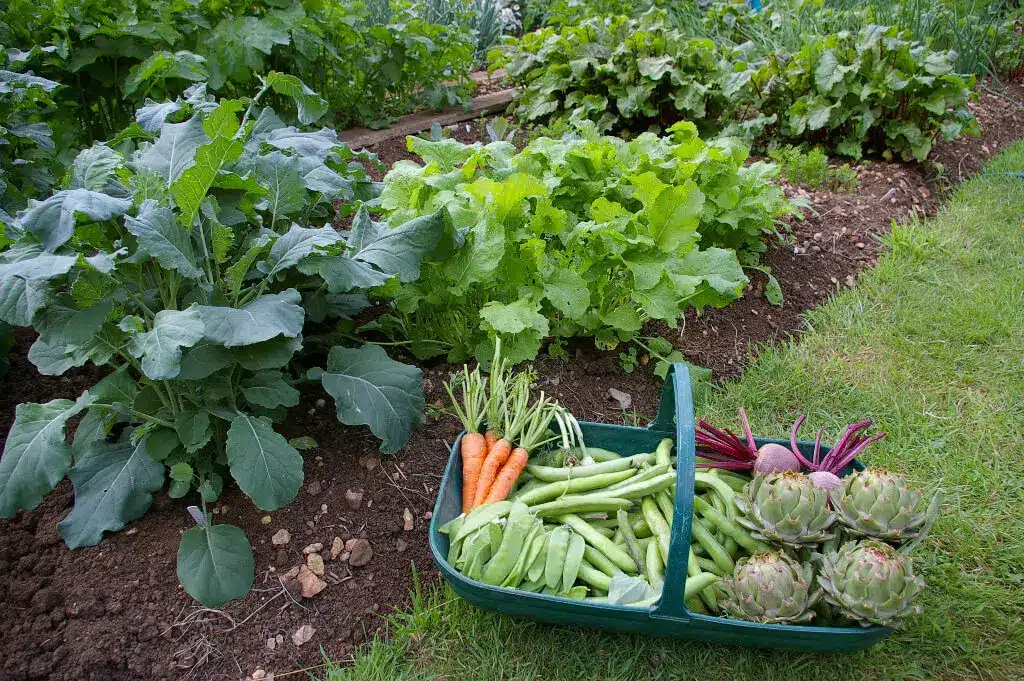Most plants best grow in sunny locations, and this is especially true for vegetables. Most of the edible ones require more than six hours of sun daily to thrive and produce at optimal levels.
So if there are plenty of trees or buildings that cast a shadow in your yard, it can be challenging to select a fitting garden location.
Fortunately, not all vegetables require full sun. Some can thrive in dappled shade and as little as three to six hours of direct sun daily.
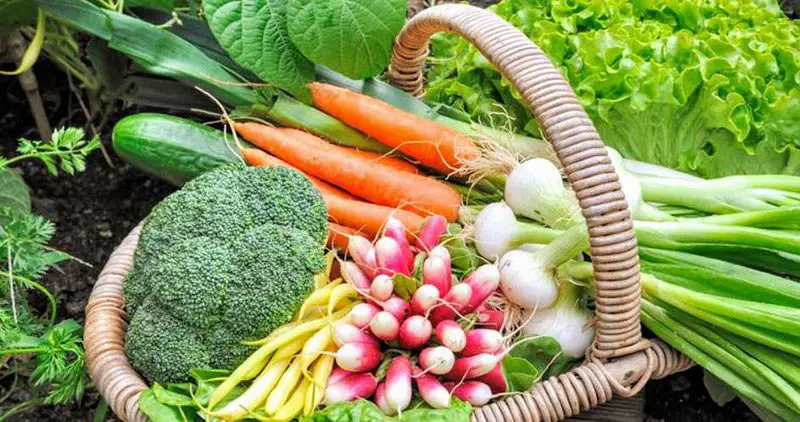
Furthermore, partially shaded spaces are perfect for providing a microclimate for vegetables that do not need a burst of strong midday sunshine.
Below are 15 vegetables that grow in the shade and a few tips for growing them perfectly.
Arugula
Arugula, also known as Eruca Vesicaria, is one of the fastest-growing and shade-tolerant vegetables. At the same time, it also blossoms in direct sunlight.

People either love or hate this cool-season plant because of its pungent odor and taste. Its peppery and spicy flavor is perfect for salads, soups, and pizzas.
However, most of the time, arugula is best eaten raw like other leafy greens, such as cabbage and broccoli. Furthermore, the soil needs to be rich and well-drained when growing this vegetable.
Asparagus
Asparagus is a perennial plant with scale-like leaves that emerge from the underground. It grows approximately 100 to 150 cm tall and yields in both direct sun locations and partial shade.

When growing asparagus, you can start from seed or one to two years old roots. Don’t worry; it is very easy to grow and maintain.
It just needs regular watering while they are young. Once you give this vegetable a good start when you first plant them, the chances of having problems in the future will be fewer.
Beets
Beets are a highly nutritious vegetable that provides plenty of health benefits to your brain, heart, and digestive system. It can be a great addition to your diet and easy to grow.

On top of that, beets are less prone to pests and diseases. Take note that planting beets in partial sun may impact the size of your beetroots, but it will not affect the taste of its produce.
This vegetable can be enjoyed raw, mixed in salads, soups, and sautéd. Moreover, there are several beet varieties to consider, including Chioggia, Detroit Dark Red, and touchstone Gold.
Broccoli
Broccoli is a slow-growing plant that will thrive in shady garden spaces. Its maturity ranges from 48 to 115 days, depending on the variety.
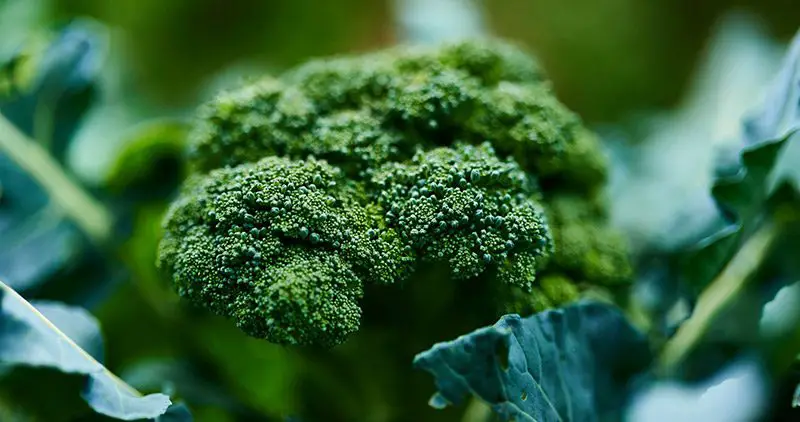
Although broccoli prefers full sun, it is tolerant of partial shade but take note that it might take longer to produce.
If you want your broccoli to grow fast, water it regularly every week because it likes steady moisture. Also, remember to keep your soil rich and moist.
Broccoli is best enjoyed raw, stir-fried, or mixed in salad greens.
Brussels Sprouts
Another member of the cabbage family, brussels sprouts are a long-season crop that can endure partial shade. It requires steady and consistent moisture and takes at least 100 days before maturation.
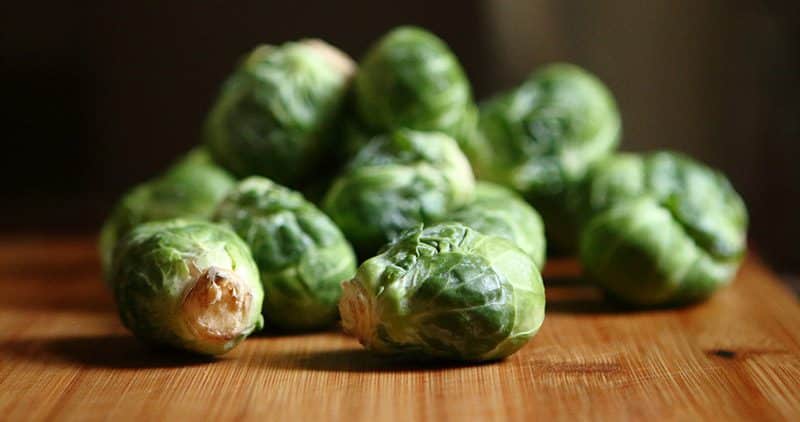
Despite being slow-growing, brussels sprouts are easy to grow and take up little space in your garden, thriving up to 30 inches tall.
Finally, each plant may have over 50 sprouts in ideal growing conditions. Its variations include Long Island Improved, Jade Cross, Rosella Purple, and Red Bull.
Cauliflower
Cauliflowers have a wide range of colors, including purple, orange, and green, but white is the most common. Its varieties are Flamestar, Cheddar, Graffiti, Romanesco Veronica, and Snow Crown.

This crop tolerates partial sun and some cold. However, the shade prevents them from growing fast and with smaller heads.
On the brighter side, shady gardens prevent the head from discoloring and flowering prematurely. When planting cauliflower, make sure to keep your soil rich, moist, and well-drained.
Finally, this vegetable is best enjoyed raw, steamed, stir-fried, baked, or pickled.
Garlic
Garlic is another crop that thrives in as little as four hours of sun daily, but make sure that the garden soil is well dug over and crumbly when planting the cloves.

Unlike other vegetables, garlic is not grown from seeds rather from cloves. It also requires regular watering of about half an inch to one inch of water weekly.
Watering this crop should become more frequent during warm weather, so it would be best to water every three to five days.
Finally, there are plenty of garlic varieties you might want to grow, such as German Extra Hardy, Music, Purple Glazier, Inchelium Red, and California Softneck.
Kale
Kale is a cool-season crop that grows in full sun and partial shade. Although planting them in your garden space hit by partial sun might not make it as leafy or stocky, they will still thrive and produce leafy greens all seasons long.

When growing this crop, it would be best to avoid planting it near other brassicas, such as broccoli, brussels sprouts, and cauliflower, as the same pests and diseases may prey on them.
Dwarf Blue Curly, Nero di Tuscana Lacinato, and Red Russian are some kale variations you can try.
Leeks
Leek is another vegetable that thrives in sheltered and shady garden spaces. It is closely related to onions but has a milder flavor. Its varieties include King Richard, Poncho, and Takrima.

Leeks require a well-drained site and well-prepared garden soil with lots of fertilizer. When growing this crop, avoid planting it near beans and legumes.
Instead, carrots, fruit trees, garlic, onions, and tomatoes are better companions for leeks. Together, these crops protect each other from flies, moths, and other harmful pests to prevent destructive diseases.
Finally, leeks are best used in soups, meat, and vegetable dishes.
Lettuce
Lettuce is a perfect crop to plant in areas with deep shade because it dislikes too much sunlight. Ideally, this type of vegetable only requires a maximum of six hours per day and will still thrive if given less than that.

Growing lettuce in shady spots keeps its roots cooler; thus, you can harvest longer as the weather heats up.
Although one thing to note, it is vital to cultivate this crop in loose and well-drained soil, so it is moist but not soggy.
Before you start planting the seed or transplant, it is best recommended to keep the soil fertile for about a week.
Mustard Greens
Although fond of full sun, mustard greens are a fast-growing and cool-season vegetable that also flourishes in partial shade. Furthermore, this vegetable does not thrive well in hot temperatures.
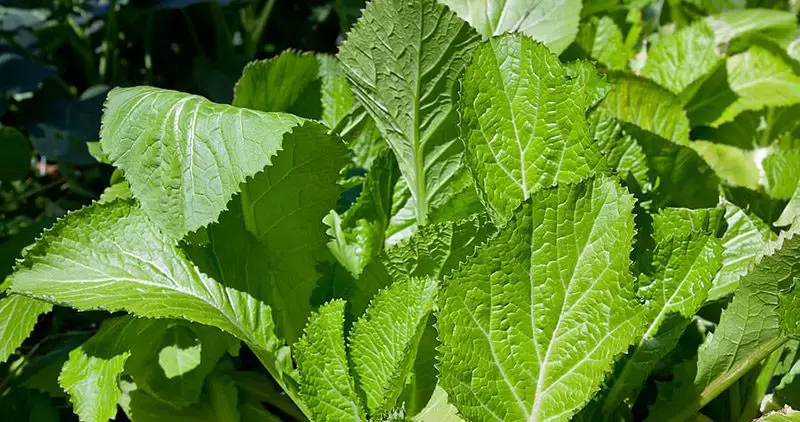
It would also be best to avoid planting dried beans, soybeans, and sunflowers to prevent diseases like white rust, leaf spots, and mosaic virus.
Mustard greens can also be eaten raw, sautéed, steamed, or simmered. It has an intense mustard flavor that is perfect for stew.
Peas
Peas are another cool-season crop that grows best in containers and shady gardens. The key to planting this vegetable is timing because you want to start cultivating the seed in the soil and harvest the produce before the weather gets too hot.

Peas are space-saving crops as they best grow in containers. Harvest takes around 30 to 65 days, depending on the variety. One pro tip you can try is to harvest peas frequently to encourage the plant to keep producing.
Other pea variations you might want to consider are Oregon Sugar Pod, Super Sugar Snap, and Garden Sweet Shelling.
Potatoes
Loved for their versatility, potatoes thrive in full sun exposure but also tolerate partial shade and cooler temperatures.

It only requires roughly six hours of direct sunlight since too much shade can prevent the vegetable’s proper growth.
Moreover, potatoes need to be watered at least one to two inches of water weekly. Maturity takes up to 80 to 100 days, but usually, you can harvest smaller new potatoes as early as ten weeks.
There are plenty of potato varieties like Russet Potatoes, Yukon Gold Potatoes, All Blue Potatoes, Adirondack Blue Potatoes, Red Bliss Potatoes, German Butterball Potatoes, and Kennebec Potatoes.
Radish
Surprisingly, radishes are another root vegetable that can tolerate and thrive in partial shade. It comes in many varieties, such as Cherry Belle, French Breakfast, Sparkler, and Watermelon Mantanghong.
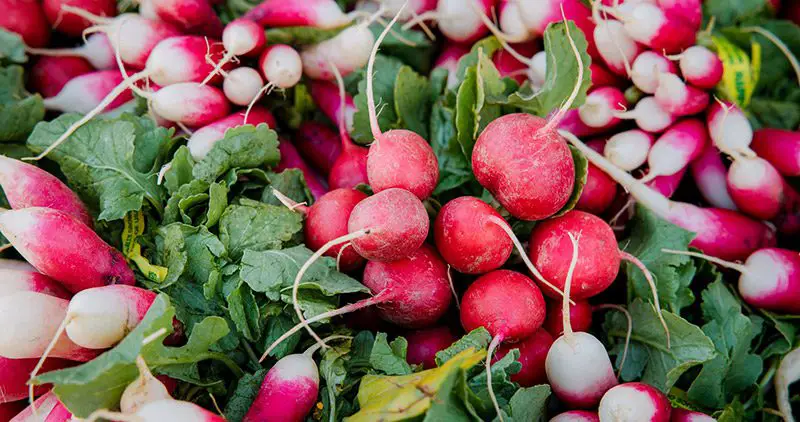
Radishes are quick-growing crops that can be harvested as early as 30 days. Furthermore, an inch of water every week is ideal for this crop.
Also, note that if your soil is sandy, it would be more optimal to water your plant as frequently as once a week to keep moisture.
Radishes are best eaten roasted, sautéed, or pan-fried. Alternatively, you can also eat them raw, mixed on salad greens, and your veggie platter.
Swiss Chard
Last but not least in this list is the swiss chard, also known as Beta vulgaris. It is one of the low-maintenance root crops that thrive in hot temperatures, making it a preferred substitute when you can not grow spinach.
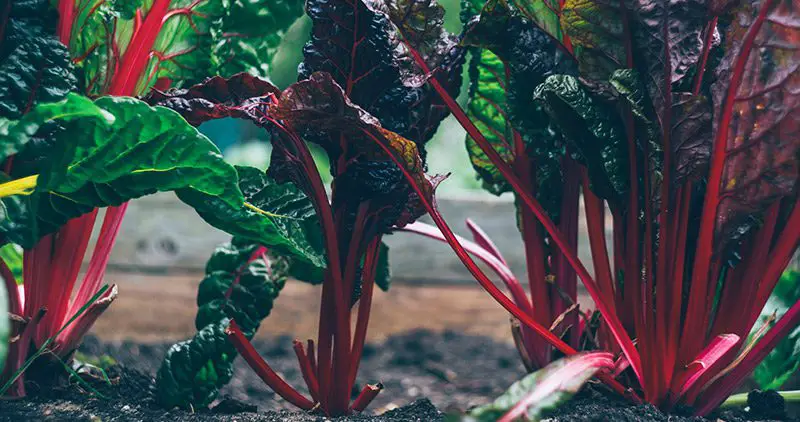
Swiss chards are one of the most tolerant of partial shades and usually prefer rich and well-drained soil. Cultivating this plant is also straightforward. Simply direct sow the seeds or plant the transplant.
You can toss swiss chards on your salad or sautée with salt and garlic.
5 Tips for Growing Vegetables in Shade
It’s easy to feel confused and overwhelmed when growing vegetables in shade for the first time. To help make sure you start the right way, here are a couple of tips you can use:
Tip #1: Use Good Quality Soil
Improving the quality of your soil should be a continual process to sustain a healthy and nourishing environment for your vegetables.
Shade-tolerant crops must receive lots of nutritious compost to resist pests easily and produce abundantly even with limited sunlight provided.
You can try adding compost to the soil to improve its structure and help it retain its nutrients. Organic gardening and mulching the surface can also positively affect soil moisture conservation, enhancing health and fertility.
It would also be best to rotate your crops annually. Doing so prevents the depletion of nutrients and interrupts the cycle of harmful pests.
Tip #2: Adjust the Moisture Requirements
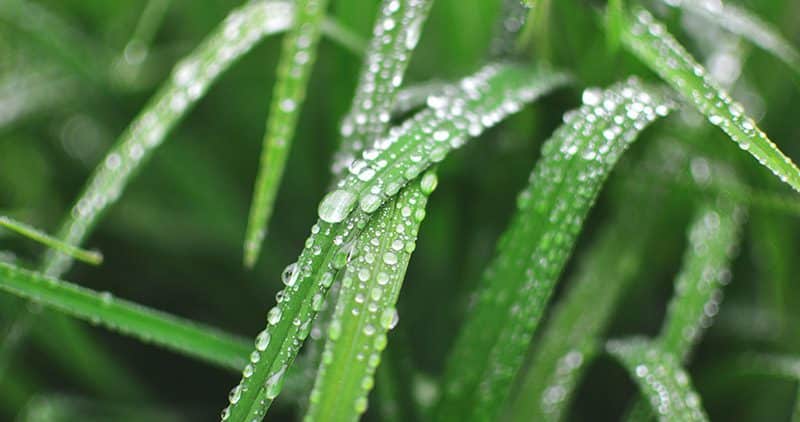
Unlike crops that require full sun, shade-tolerant vegetables do not need to be watered as often because moisture does not evaporate as quickly.
However, if there are trees near your shade garden, you might need to consider watering more often as the trees will compete with your crops for moisture.
Besides, trees can also prevent your plants from gaining moisture when it rains. Remember to water when the soil looks and feels dry. Mulching can also help you conserve moisture, prevent soil erosion, and help suppress weeds.
Tip #3: Watch Out for Pests
Common garden pests like leaf miners, gall mites, and beetles can quickly kill your crops. A few signs to watch out for that your shade garden is infested with harmful pests include large holes in leaves, leaf chew marks, and silver trails of slime.
Slugs and snails, too, can be harmful to your plants and are most especially drawn to shady and cooler temperatures.
To prevent unwanted pests, attracting frogs and toads can help you reduce pest populations naturally. Alternatively, you can use pesticides, but take note that they might impact your crop’s physiology.
Tip #4: Grow Crops in Containers
Growing crops in containers makes it easier and more convenient to move your vegetables into areas that receive more sunlight as the seasons change.
Planting in containers also has numerous advantages, such as less maintenance in terms of vegetable gardening tools and equipment. Plus, weeds are less likely to find their way into your pot or container.
Tip #5: Expect Slower Maturation
Remember that sunlight significantly affects your plant’s growth as it is the energy source for photosynthesis. Plants that do not grow in full sunlight mature and grow slowly because of lower light levels and cooler temperatures.
However, some plants have anatomically adapted to photosynthesizing even in low light. Thus, expect your crop to grow longer than what is suggested on its seed package, given its growing conditions.
Key Takeaways
The vegetables listed above are considered cool-season crops; thus, you can either plant them in shady gardens or spots where they can receive direct sunlight and still find successful ways into growing them.
However, sound planning is always the key to a successful vegetable garden center. Allotting time to plan, organize your crops, and know how to deal with harmful pests is the safest and most effective way to go.

